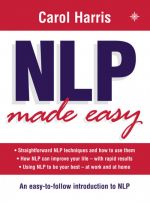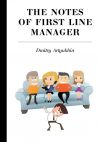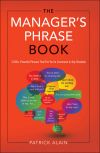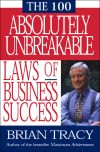Правообладателям!
Представленный фрагмент книги размещен по согласованию с распространителем легального контента ООО "ЛитРес" (не более 20% исходного текста). Если вы считаете, что размещение материала нарушает ваши или чьи-либо права, то сообщите нам об этом.Читателям!
Оплатили, но не знаете что делать дальше?
Текст бизнес-книги "NLP Made Easy"
Автор книги: Carol Harris
Раздел: Жанр неизвестен
Текущая страница: 3 (всего у книги 4 страниц)
Isn’t NLP just positive thinking?
Well, yes, in a way, but it goes far beyond simply having nice thoughts and actually gives people a way of knowing what to do in order to think positively. For example, some years ago a training video was produced on presentation skills. The video told viewers that it was important, when making a presentation, to feel confident. However, no advice was offered on how to do that! NLP makes it possible to offer such advice by being able to identify specific things that can be done to master thoughts and feelings as well as behaviour.
Isn’t NLP manipulative?
Most things can be used in a manipulative way, although they themselves are simply neutral tools. For example a motor car can be driven in such a way that it becomes a hazard, or a person collecting money for an animal charity could take along a sorry-looking small furry animal to elicit feelings of sympathy in passers by. NLP as an approach, like the motor car or the small animal, is neutral; it does not impose rules for its use. So how you use NLP is as important as what you use it for; it is ultimately up to you to determine whether it is used ethically or not.
How can NLP be taken seriously if it claims to work so quickly?
The problem with this question is that it presupposes certain limitations. If you are used to things taking a long time, speed may be suspicious. For example, you could say it takes years of study to learn the differences between wild plants, but one encounter with a stinging nettle could well imprint its appearance, smell and feel indelibly on your mind! Because conventional psychological approaches have traditionally been time-consuming, it can be difficult to believe that work with NLP can be as fast as it is; the proof, however, is in the results, not in the hype.
Is it really a separate field of study?
This question often comes from people used to thinking about subjects in a very tightly defined way and it has been said that NLP draws on so many other disciplines that it is not a discrete field in itself. Although it has drawn upon many other disciplines, NLP does have unique elements of its own, some of which were covered at the beginning of this chapter in the section on ‘Features of NLP’. It is probably the focus on the practical applications of mental processing which most distinguishes NLP from other disciplines. It also has established programmes of study, with recognized qualifications at different levels, making it a discipline which is unique and identifiable.
The Future of NLP
From the start, NLP has been evolving and developing. Its main founders are still active and developing new concepts and approaches, as are others newer to the field. For the future, we can anticipate further refinements, more applications and innovation and creativity in NLP’s further development.
Chapter 2
The History of NLP
In the last chapter, some of the origins of NLP were discussed and some people associated with its development mentioned. This section takes a more in-depth look at these origins, both in the USA and the UK, and at some of the people who have been a great influence on the emergence and continuation of NLP, some by contributing new techniques and approaches and some by popularizing NLP to a wider audience.
NLP in the USA
NLP as a defined field of study originated in the USA in the early 1970s although, as mentioned in the last chapter, there were many influences on its development, going back decades (including likely links to US Air Force/CIA research on language, modelling, eye movements and so forth) or, in the case of some of the ideas themselves, centuries.
In the late 1950s, a group of people had come together in Palo Alto, California, in what became known as the Communication Research Project. Led by Gregory Bateson (see below) it studied communications, psychotherapy, brief therapy and animal behaviour. A further group was set up later at the Mental Research Institute (MRI), the best-known members of which were Paul Watzlawick and the late David Weakland. This group was generally referred to as the Palo Alto Group. The group looked at the approaches and techniques of current practitioners, including Perls, Satir, Erickson and Huxley, considering what they did and said that had an effect on others; in other words, their processes as well as the content of their communications and activities. The Palo Alto work led to further research at Stanford University and was a major influence on the early developers of NLP.
The focus of activity for NLP itself was, initially, the University at Santa Cruz, California, where the Dean had a vision of creating an environment where different disciplines, ideas and models could come together in a creative way. This whole area of California was a hotbed of ideas and development, including Santa Cruz, Palo Alto and Big Sur, where the famous Esalen Institute was to be formed. In this climate, a group of people at Santa Cruz became interested in personal enhancement, creativity and communications. The underpinning drive which lay behind most of the group’s activities was that of curiosity. This period has been written about in many books on NLP, including The Wild Days: NLP 1972–1981 by Terrence L. McClendon, which gives a highly personal account of the period.
NLP’s best-known founders, Richard Bandler and John Grinder, became part of the wider group at Santa Cruz, working on aspects of development. Bandler studied a range of topics – initially physics and computing, then psychology, philosophy, maths and other subjects. He was also a talented musician. Becoming disillusioned with existing university courses, he explored ways of bringing about practical changes in the fields in which he was working. One of his particular interests was Gestalt psychology and he started to teach seminars in Gestalt Therapy.
Bandler formed a close association with John Grinder, who was Assistant Professor of Linguistics at Santa Cruz. Grinder had gained a PhD in San Francisco, where his language studies included the theories of Noam Chomsky, the American linguist. He had been an interpreter in the US army and had engaged in covert operations. He was very experienced in working with language through ‘modelling’ (see Chapter 3), and had learned several languages using this process.
As Bandler had exceptional skills in absorbing other people’s behavioural patterns (in the early days he was referred to as a sponge, because of this ability to ‘become’ another person) and Grinder had great experience of modelling (and was sometimes referred to as a chameleon because of his ability to ‘change his colours without changing himself’), they began working together, with Bandler showing Grinder what he did and Grinder helping him model it. Together they analysed the performance of many people, including some leading therapists – initially Fritz Perls and Virginia Satir, and later Milton Erickson. Although Virginia Satir and Milton Erickson were available face to face, Perls had already died and Bandler’s analysis of how he worked came from studying videotapes of him. It has been reported that Bandler became so focused on Perls that after lengthy periods with the video machine, he would emerge looking and sounding just like Perls, with a German accent and a stoop, and smoking heavily.
Together with Bandler and Grinder, a group formed, working on the various elements which became the foundations of NLP. Each of the emerging techniques was explored and refined on an ongoing basis. As well as working on NLP, people were experimenting with hypnotic techniques and language, including deep trance states, positive and negative hallucination, time distortion and amnesia. Terrence McClendon, in The Wild Days, remarks on the association between NLP and hypnosis: ‘You could say that the NLP techniques are the conscious mind’s model of how the unconscious mind works in hypnosis.’
It is difficult to attribute the emergence of a particular NLP technique to a particular ‘creator’, as the efforts of the whole Santa Cruz group often interrelated in order to allow these forms to emerge. As work continued, the different elements of NLP gradually emerged and many of its original creators and developers are still making further refinements and extensions.
Personal associations were also formed during the period in California. In 1977 Bandler married Leslie Cameron and she became Leslie Cameron Bandler. They were married by Grinder, who was a preacher from the Universal Light Church. The marriage lasted only a year or so. Grinder himself later married Judith DeLozier, with whom he formed Grinder, DeLozier and Associates after parting company with Bandler in the 1980s. His marriage also came to an end some while later and he is now in partnership with Carmen Bostic St Clair.
While they were still working together, Bandler and Grinder set up the Society of Neuro-Linguistic Programming, originally as a partnership between Bandler’s company Not Limited and Grinder’s company Limited Unlimited. They also formed a publishing company called Meta Publications, which was responsible for many of the notable books in the field of NLP.
In 1977 the Division of Training and Research (DOTAR), a training, development and research operation, was set up in Santa Cruz by Richard Bandler, John Grinder, Judith DeLozier, Leslie Cameron, Maribeth Anderson, Robert Dilts and David Gordon. This was the first NLP training institute and Leslie Cameron was overall Director, David Gordon was Director of Training and Robert Dilts was Director of Research.
By late 1976, some of the people who had been attending Bandler and Grinder’s workshops started to run their own. These people included Byron Lewis, Robert Dilts, Terrence McClendon and Steve Stevens (later Andreas). Also Leslie Cameron Bandler and Judith DeLozier began presenting workshops together.
As the field grew, so some of the original associations began to change and, in particular, the partnership between Richard Bandler and John Grinder came to an end in the early 1980s. Their interests had begun to diverge and they also had different ideas about what the future held in store for NLP. Both, however, continued to be driving forces within NLP and continue to train and write to this day.
NLP was, from its inception, very much about practicalities and application, rather than theory. Questions such as ‘How can this be used?’ and ‘How can this be taught?’ were asked frequently. The legacy of the Santa Cruz group lies, at least in part, in the attitudes of curiosity and usefulness which informed its work. As NLP continues to develop, questions about application and transfer are still foremost in the minds of many working in the field.
NLP in the UK
While NLP began life in the USA, the United Kingdom became a focal point for much activity and innovation, with two main strands to its development, involving Eileen Watkins Seymour and Graham Dawes. Together with Gene Early, Ian Cunningham and David Gaster, they made contacts which led to the foundation of the UK Training Centre for Neuro-Linguistic Programming (UKTC).
In Eileen Watkins Seymour’s account of how the field developed in Britain, she relates how in 1979 she was contacted by a fellow student on a humanistic psychology master’s programme in London and agreed to host a meeting with Gene Early and others who were interested in the subject.
Around a dozen people gathered and from this original meeting a study group was formed, which met on a fortnightly basis. Some of the people involved at that time were Michael Mallows, Willie Monteiro, Graham Dawes, Vivienne Gill, John Watson and Frank Kevlin, who later became Chair of the UK Association for Neuro-Linguistic Programming.
By the following year, members of the group became interested in starting some NLP training and Eileen, Gene Early, Graham Dawes, David Gaster and Ian Cunningham initiated the first Diploma programme in the UK, at the London Business School, and the UK Training Centre (UKTC) was born. The Diploma programme lasted eight months, with a focus on quality in both the training and the elements surrounding it. At the time it was the only full-scale NLP training anywhere outside North America.
The aim of the UKTC was to grow people, not to make money, and the whole ethos of the organization reflected this. Sessions ran from Friday evening through the entire weekend. The first group consisted of 30 people, many of them therapists, and as well as the weekend training, everyone went to a weekly study group. Early trainers on the programme included Gene Early, Barbara Witney, David Gaster, David Gordon and Robert Dilts. Charlotte Bretto and Dave Dobson were also early trainers. Later, master’s programmes were offered, as well as speciality workshops given by visiting trainers from overseas.
By 1987, David Gaster had moved on and Gene Early and Graham Dawes felt it time to hand over the reins. Dudley and Regan Masters, trainers who had graduated from the UKTC, were given the Centre. Eileen was still keen to continue, but decided to ‘let go of [her] baby’. The UKTC only lasted for two further years and was then wound up. Dudley and Regan Masters have not been seen on the NLP scene since and word has it that they became born-again Christians. David Gaster, sadly, died a few years ago. Eileen, in conjunction with Clive Digby-Jones (now her husband), founded and still runs the Ravenscroft Centre in London. Graham Dawes continues his activities in NLP, as does Gene Early. Both are respected figures in their communities.
Several early graduates of the UKTC subsequently set up their own training centres in the UK. Some of the earliest ones were PACE, John Seymour Associates, NLP Training Program, Pace Personal Development and Sensory Systems, as well as associated bodies such as British Hypnosis Research and the Proudfoot School of Hypnosis.
Currently there are over 50 UK training organizations and although it is increasingly difficult to pinpoint individuals or individual organizations as ‘leading edge’, there are many innovative steps being taken which contribute to the development, and professionalism, of NLP in the UK.
In addition to the training organizations, numerous networking and practice groups have sprung up throughout the UK and these provide an opportunity for people at all levels of experience to meet, exchange ideas and work on their own personal and professional development. The most prominent of these started life as the Paddington Group, meeting near Paddington station in central London in the 1990s. This group introduced a wide range of people to NLP and acted as a forum for prominent practitioners from the UK and outside.
The Association for Neuro-Linguistic Programming (ANLP)
Formed in 1985 as a non-profit making organization, the Association for Neuro-Linguistic Programming was, until recently, a registered educational charity, recognized internationally as probably the leading association for those interested in, and using, NLP. Originally set up by Eileen Whicker following an inaugural meeting at the London Business School on 8 May 1985, it was envisaged as an umbrella organization for the development of NLP; in Eileen’s words, ‘setting core standards for training and practice, being a basis for exchanging information and experience, creating links with other NLP bodies, setting standards and ethics, promoting research, keeping abreast of legislation and representing NLP in a professional capacity to Government and serving on the Steering Committees then being set up’.
The preparatory meeting held to form the Association was attended by Eileen Whicker, Eileen Watkins Seymour, Basil Jones, Dudley Masters, Valerie Beeby and Surya and John Watson. Support was also obtained from Eric Robbie and Willie Monteiro as well as Gene Early. A steering committee was then set up, consisting of Eileen Whicker, Nigel Gowland, Eileen Watkins Seymour and Roy Johnson, and the first meeting, on 12 April 1985, resulted in an open invitation being sent to other interested people.
The inaugural meeting was held at the London Business School on 8 May 1985 and around 60 people participated. The first executive committee consisted of: Chair: Eileen Whicker, Vice Chair: Peter Rust, Treasurer: Roy Johnson, Secretary: Regan Masters, Membership Secretary: Paul Clarke. Eric Robbie helped to prepare the Association’s first newsletter and Frank Kevlin, later to become Chair, helped set up and print the first issue of Rapport, currently a quarterly magazine of international reputation.
From these beginnings, ANLP expanded to around 1,000 members in the late 1990s, worldwide, in all walks of life. After Eileen, Chairs of the Association were Frank Kevlin (who died very tragically at a young age), Sue Burke, Peter Child, Carol Harris and Derek Jackson. In 1996, the Psychotherapy and Counselling Section (PCS), which had existed for several years, became a wholly owned subsidiary company of ANLP, catering for those involved in therapeutic applications and leaving the main body of ANLP covering those in business, personal development work and a myriad of other activities, with its main activities being public information, recognition of training organizations, conference organization and magazine production.
Recently, PCS separated from ANLP, the Association’s charitable status stopped and it ceased recognizing training organizations or courses. It is now simply an information and networking organization rather than a professional body. No longer a leading international entity, its future development is likely to be limited if it pursues its present path.
People
Let us now turn to some other people who were involved in NLP’s development, contributed ideas which were seminal to its progress, or helped popularize and promote it as a field of activity.
Richard Bandler and John Grinder
As mentioned above, these two men are recognized as NLP’s major co-founders. Although they are generally credited with ‘creating NLP’, many of its ideas and principles had come from earlier thinkers, or been based on their ideas and writings.
Alfred Korzybski
Recognized as the founding father of general semantics, Count Korzybski had a major effect on the development of NLP and, in particular, the ‘Meta-Model’ (see Chapter 3).
Born in Warsaw in 1879, Korzybski trained as an engineer. He served in the First World War, attached to the General Staff Intelligence Department of the Second Russian Army, and later served in the US and Canadian military services, remaining in the USA from 1921. He developed his theory of time-binding around 1921 and published his first book, Manhood of Humanity, in 1921 and his most famous work, Science and Sanity, in 1933.
Korzybski was founder and Director of the Institute of General Semantics, which was established in 1938 as a centre for training in his work. One of its aims was ‘neuro-linguistic’ research and education. Korzybski was the first person to use the term ‘neuro-linguistic’ and it appeared in Science and Sanity; he continued to write and lecture until his death in 1950.
Noam Chomsky
Chomsky was a professor of linguistics whose work, based on Korzybski’s earlier ideas, was key to much of the development of NLP. Now a revolutionary figure prominent in US politics, he became very anti-establishment at the time of the Vietnam War. Chomsky’s work on general semantics first appeared in a range of published papers and culminated in the 1957 publication Syntactic Structures (now out of print). This work established the transformational model of language, with its concepts of deep structure and surface structure, elements which feature heavily in NLP’s approach to precision in language. Chomsky’s 1965 book Aspects of Theory and Syntax, published by MIT Press, is an easier publication for the general reader.
Gregory Bateson
Bateson was a British anthropologist and author who influenced several of NLP’s leading proponents. His father, a geneticist who coined the word ‘genetics’, named him after the famous Russian geneticist Gregor Mendel.
Bateson wrote on a range of topics including communications, systems theory/cybernetics, psychology, psychiatry, anthropology, biological evolution and genetics. He received a Guggenheim Fellowship for his first attempts to synthesize cybernetic ideas with anthropological data. He was ‘ethnologist’ at the Veterans Administration Hospital at Palo Alto from 1949 until 1962. At the time he was married to Margaret Mead, another famous anthropologist, who also worked with him on many projects.
Later, Bateson’s communication studies were extended to the animal kingdom and, together with his then wife, Lois, he kept about a dozen octopuses in their living-room! He went on to become director of a dolphin laboratory in the Virgin Islands, where he continued his studies on communications in animals for about a year. In 1963 he went to the Oceanic Institute in Hawaii to work on problems of animal and human communication and it was there that he wrote most of his book Steps to an Ecology of Mind (1972).
Bateson also led the Palo Alto Group (see page 35) and lectured at the University of Santa Cruz at the time that Bandler and Grinder were developing NLP. He was a neighbour of Bandler’s and it was he who suggested that Bandler and Grinder visit Milton Erickson (see Erickson, page 40).
Bateson considered that ideas were not abstract concepts, but the basis for the way people live their lives. He said that people should think and act systemically, by allowing both conscious and unconscious processes to shape their decisions, and by developing congruity in diverse parts of the mind. In the preface to Bateson’s Steps to an Ecology of Mind, Mark Engel says:
The central idea in this book is that we create the world that we perceive, not because there is no reality outside our heads … but because we select and edit the reality we see to conform to our beliefs about what sort of world we live in … For a man to change his basic, perception-determining beliefs … he must first become aware that reality is not necessarily as he believes it to be.
Правообладателям!
Представленный фрагмент книги размещен по согласованию с распространителем легального контента ООО "ЛитРес" (не более 20% исходного текста). Если вы считаете, что размещение материала нарушает ваши или чьи-либо права, то сообщите нам об этом.Читателям!
Оплатили, но не знаете что делать дальше?







